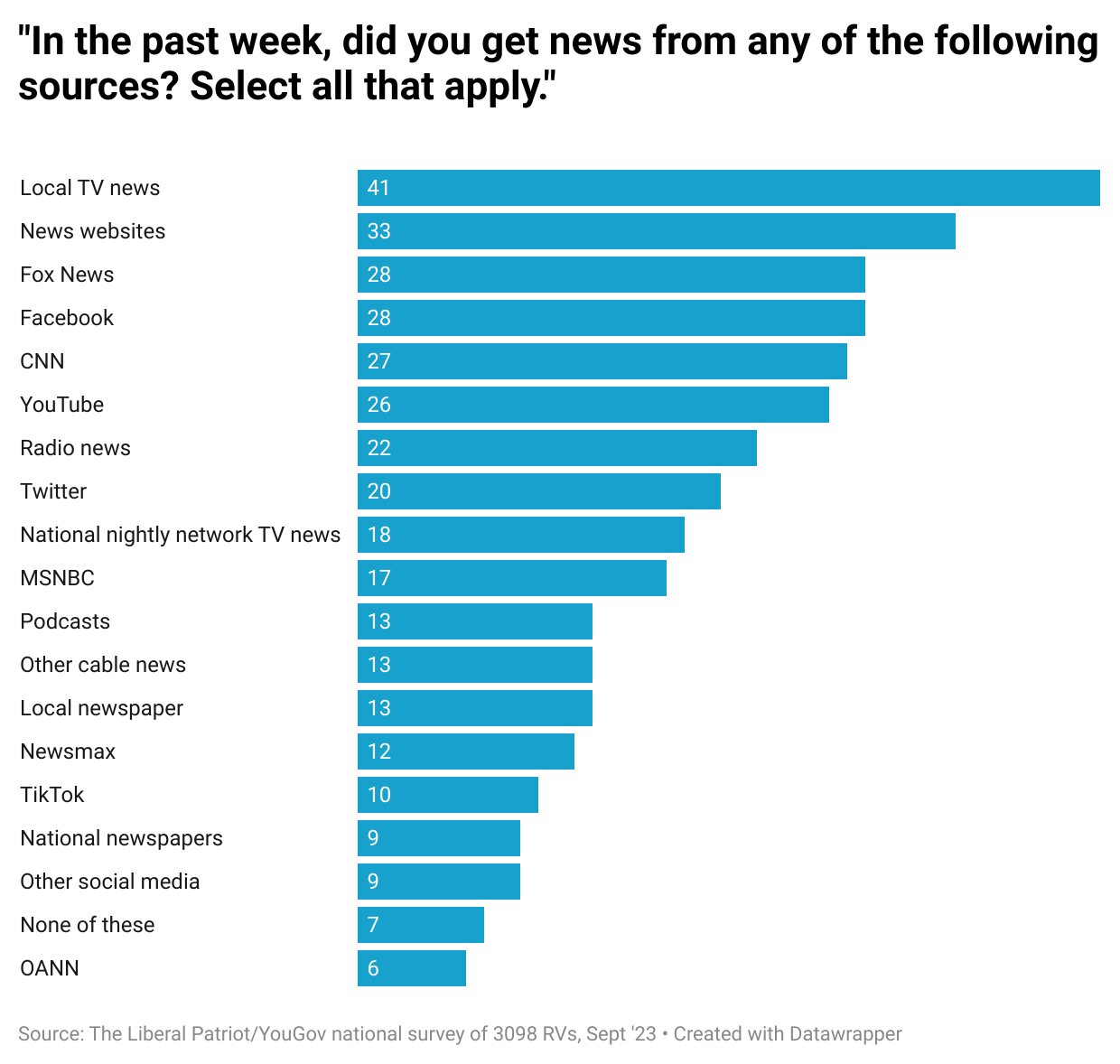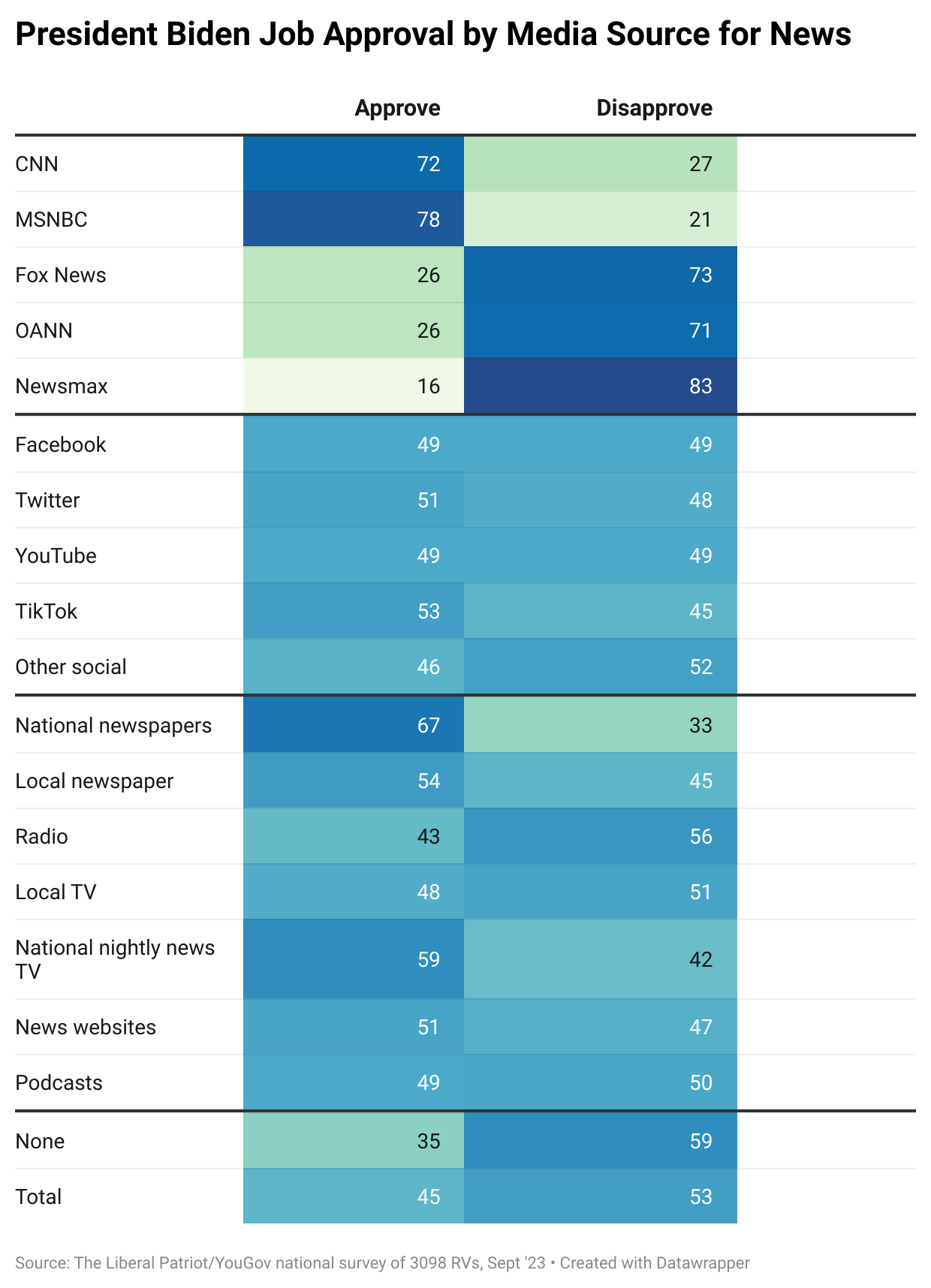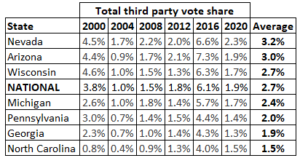The following article by Ruy Teixeira, senior fellow at the American Enterprise Institute, politics editor of The Liberal Patriot newsletter and co-author with John B. Judis of the forthcoming book “Where Have All the Democrats Gone?,” is cross-posted from The Liberal Patriot:
The Fox News Fallacy is the idea that if Fox News (substitute here the conservative bête noire of your choice if you prefer) criticizes the Democrats for X then there must be absolutely nothing to X and the job of Democrats is to assert that loudly and often. The problem is that an issue is not necessarily completely invalid just because Fox News mentions it. That depends on the issue. If there is something to the issue and persuadable voters have real concerns, you will not allay those concerns by embracing the Fox News Fallacy. In fact, you’ll probably intensify them by giving such voters the impression that Democrats simply don’t care about their concerns and will do nothing to address them. That undermines the Democrats’ ability to respond to predictable attacks against their candidates and party and increases the likelihood of electoral defeat.
As I have documented, there are many current examples of this fallacy including in such hot-button areas as immigration and crime. In the latest ABC/Ipsos poll, Biden’s job approval rating on handling “immigration and the situation at the U.S.-Mexico border” is 26 percent, with 70 percent disapproval (net: minus 44) and 33 percent on handling crime, with 64 percent disapproval (net: minus 31). That hurts the Democrats not just on these particular issues but also by bolstering their image as a party that tolerates, if not facilitates, social disorder.
But from a political standpoint, the worst example of the Fox News Fallacy by far is around voters’ number one issue: the economy. Consider these recent data on voters’ views of the economy.
1. In the new CNBC survey, Biden’s approval rating on the economy is an abysmal 32 percent with 63 percent disapproval. This includes some very low ratings among some groups Democrats plan to rely upon in 2024: Just 35 percent among young (18 to 34 year old) voters and among Latinos. And then there’s the working-class problem: 31 percent approval among high school graduates (or less), 34 percent among those with some college and only 32 percent among those who identify as either low income or working class. The latter figure includes a 27 percent rating among low income/working-class whites and, more surprisingly, an anemic 39 percent rating among low income/working-class nonwhites. That’s not exactly what the Biden administration had in mind when they started their Bidenomics offensive.
Perhaps most alarming of all, among voters who currently say they are undecided between Biden and Trump for 2024, Biden approval rating on the economy is just 13 percent. 13 percent! That doesn’t bode well for moving these undecideds into Biden’s column.
2. In a survey of 5,000 voters across seven swing states (Arizona, Georgia, Michigan, Nevada, North Carolina, Pennsylvania and Wisconsin), Morning Consult found that about three-quarters of voters believe the nation’s economy is headed down the wrong track and that, on net, voters were likely to think their personal financial situation was better under Trump than Biden.
And in a direct hit to the Bidenomics campaign, about half (49 percent) of swing state voters say Bidenomics—the economic policy of the Biden administration—has been bad for the economy, compared to just 26 percent who say it has been good for the economy and ten percent who say it has had no impact. Among those currently undecided between Biden and Trump for 2024, views are even more negative: only two percent (!) say Bidenomics has been good for the economy.
Even more damaging to the Bidenomics cause, swing state voters say they trust Trump more than Biden to handle a wide range of economic issues. That includes the economy generally (Trump +14), the stock market (Trump +16), everyday costs (Trump +12), interest rates (Trump +13) and taxes (Trump +10). Even issues like the job market, unemployment, pay raises, housing and personal debts generate Trump advantages of six to seven points.
Of course, conservative media outlets—Fox News and the like—are quick to point to results like these and argue that the Biden economy, especially associated inflation, is to blame. On cue, Democrats are quick to argue that this can’t be right—the economy has been going great guns! Unemployment is super-low, job creation has been strong, inflation has been moderating, real wages have started to rise and (so far) no recession. Therefore, if voters say they’re unhappy with the economy that can’t possibly reflect their “lived experience” as it were but rather how they are being manipulated and misinformed by the media, especially Fox News, etc.
This is a huge mistake—a textbook and very damaging example of the Fox News Fallacy. It’s still the case that real hourly wages and weekly earnings are lower now than when Biden took office (though they’re comparable with pre-pandemic levels). The latest income data from the Census Bureau also show continued decline in real median household income in the first two years of the Biden administration, leaving it 4.7 percent lower than its pre-pandemic peak. In contrast, the pre-pandemic years of the Trump administration saw an increase of 10 percent in household income.
And, critically, as Bill Galston notes in a new article, “$8.99 Cereal Could Rock the Globe:”
In the current election cycle, the central economic issue isn’t growth and jobs, but inflation. The most recent Economist/YouGov poll asked a random sample of Americans, “Which of the following do you consider the best measure of how the national economy is doing?” Four percent selected the stock market; 11 percent picked their personal finances; 15 percent chose unemployment and jobs reports. But 56 percent said the best measure was the prices of the goods and services they buy.
When economists talk about “inflation,” they are referring to the rate at which prices are increasing. They have naturally been puzzled by the continued intensity of public concern about inflation, given that the rate of inflation has declined significantly. But surveys show that average Americans are at least as concerned about price levels as they are about the rate of price increases.
That brings us to the price of breakfast cereal. “I almost had a heart attack the other day when I saw a box of cereal for $8.99,” said an Illinois house cleaner. “I was like, ‘Does that come with a gallon of milk too?’” I’m sure she’s speaking for many Americans; I know she’s speaking for me. My sense of what things should cost at the grocery store is anchored at pre-pandemic levels, and I find it hard to accept that so many items have risen in price by 30 percent or more. My wife and I can afford the higher prices, though we sometimes choose not to pay them and do without items we regard as outrageously expensive. What about families with children who are trying to get by on $75,000 a year?
Galston goes on to talk about the prices of cars and homes but you get the idea. This is voters’ lived experience. No amount of banging on about Bidenomics and new green jobs is going to make much of a dent in these feelings. The only thing that might is focusing intensely on voters’ chief economic concern and stop trying to talk them into believing the economy and Bidenomics are actually great when they clearly don’t think so. They are not just being manipulated by the evil conservative media—that’s the Fox News Fallacy. They’re trying to tell you what they really think. It might not be a bad idea to start listening.
And if not? I’ll give the last word here to Dave Wasserman from a Twitter thread:
How is it Dems are cleaning up in special elections/referendums if their national poll numbers are so bad? Because in the Trump era, Dems are excelling w/ the most civic-minded, highly-engaged voters.
Their biggest weakness? Peripheral voters who only show up in presidentials.
A big reason Dems beat pundit/historical expectations in the midterms? Only 112M people voted, including a disproportionate turnout among voters angry at Dobbs/abortion bans (many of them young/female).
But there will be ~160M voters in 2024. So who are those extra 48M voters?
They skew young, unaffiliated, nonwhite and non-college. They’re also more likely to base their choice on a simplistic evaluation of whether the economy was better under Trump or Biden.
On this question—and on immigration/age concerns—Biden is routinely getting clobbered.
Keep in mind: in 2020, when Biden’s favorability was above water and Trump was at 41 percent job approval (and Biden was ~7 pts ahead in the final polling averages), Trump still came within 42,915 votes in AZ, GA & WI out of ~160M cast nationally of winning a second term.
Now fast forward to 2024 with tied national polls, 40 percent Biden approval, equally dismal Biden/Trump favorability, more economic pessimism, growing migrant/intl crises and the potential for RFK/West to double Jill Stein’s pull on campuses, etc.
Biden is in absolutely dire shape.
Gulp.






